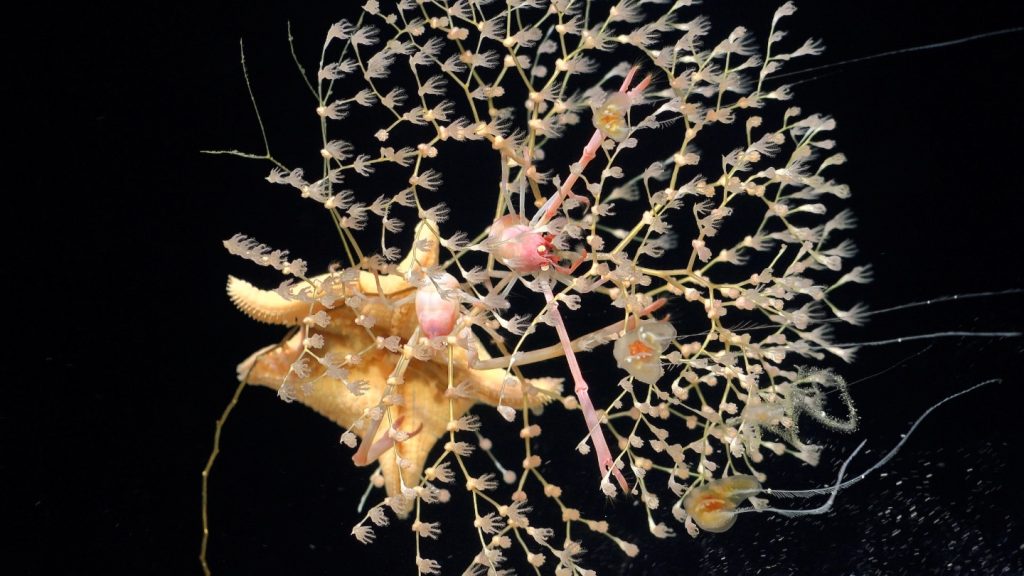A month-long survey of mountain ecosystems in the remote seas of the southeastern Pacific Ocean conducted by the Schmidt Ocean Institute in Palo Alto, California, revealed the presence of a never-before-seen seamount along with many species of sea life that may be new to science. Eighty species were observed in this area for the first time, highlighting the rich marine biodiversity present in these deep-sea environments. The newly discovered seamount, located approximately 1,400 kilometers off the coast of Chile, hosts a diverse ecosystem with a variety of deep-sea creatures drifting along a garden of sponges and corals that grow along its flanks.
The discovery of the seamount was unexpected, as satellite imaging had only shown a low-resolution bump on the seafloor. However, exploration using a diving robot revealed a massive seamount that rises thousands of meters above the ocean floor, with its summit sitting nearly 1,000 meters below the ocean surface. The researchers used the robot to film and explore the new seamount and nine others in the area, uncovering a thriving ecosystem that included a garden of sponges and ancient corals, spanning an area about twice the size of a basketball court. While not as dense as shallow water reefs, the deep-sea reef was still considered impressive given its depth.
During the expedition, the researchers encountered a variety of unique and fascinating deep-sea creatures, including the ghostly white Casper octopus, which bears a striking resemblance to the cartoon character Casper the Friendly Ghost. This octopus species has not yet been formally described by scientists and was previously only known from the North Pacific. The team also captured the first-ever footage of a living Promachoteuthis squid, a species that had only been encountered in nets before, never as a living specimen.
In addition to these discoveries, the team identified twenty species of animals that may be new to science and are likely endemic to the seamounts they inhabit. These newly discovered species, which include sea anemones, urchins, shrimp, and a squat lobster, contribute to a growing list of over 150 potential new species identified during previous expeditions in the region. Furthermore, the researchers found a fossil that may belong to a previously unknown species of ancient whale, although further confirmation is needed. These findings emphasize the importance of further exploration in this poorly understood part of the world to uncover the unique and diverse wildlife that calls it home.
Overall, the expedition to the remote seas of the southeastern Pacific Ocean led to the discovery of a previously unseen seamount and a plethora of species that may be new to science. By using advanced technology like diving robots, researchers were able to document a rich and diverse ecosystem teeming with a wide variety of deep-sea creatures. The findings underscore the need for continued exploration and study of these deep-sea environments to better understand and ultimately protect the unique marine life that inhabits them.


